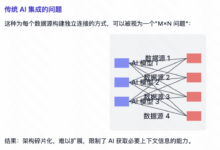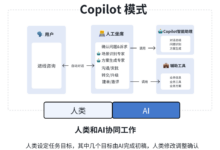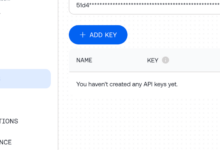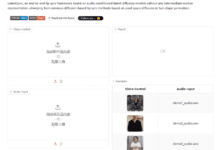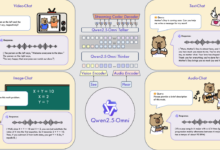The popularization of Artificial Intelligence (AI) has brought opportunities for change in education, but also serious challenges, the most direct of which is the impact on academic integrity.The ability of AI tools to generate text has blurred the boundaries of plagiarism in the traditional sense, and has brought unprecedented problems to educators. Relying solely on technological means to "track down and intercept" has proven to be limited and risky.A truly effective and sustainable response lies in returning to the essence of education and starting at the source - i.e., building a strong defense against AI abuse through careful, intelligent instructional design. This is not only about maintaining academic seriousness, but also about how to guide students to learn and grow responsibly in the AI era, balancing the dual goals of academic integrity and AI literacy development.
Limitations of detection tools: treating the symptom rather than the disease
It is true that there are various AI content detection tools on the market that attempt to recognize patterns in AI-generated text through algorithms. However, over-reliance on these tools is not a good idea. Here's why:
- False alarm risk: These tools are not perfect and can mislabel original work (especially by non-native speakers or specific writing styles) as AI-generated, sparking unnecessary conflicts and accusations.
- "Dao is one foot tall, the devil is ten feet tall." The proliferation of counter-detection techniques and "whitewashing" tools has greatly reduced the effectiveness of detection.
- Potential bias: Some detection algorithms may be biased and more "sensitive" to the writing styles of specific groups, raising concerns about educational equity.
- Treating the symptoms does not address the root cause: Testing is ultimately an after-the-fact remedy that doesn't get to the root of the problem of students' motivation to try to use AI to take shortcuts.
look as if Turnitin maybe Winston AI Tools such as these may provide some reference clues in certain contexts, but should never be used as the sole basis for determining academic misconduct.A more effective and educationally sound approach would be to focus on front-end instructional design that radically reduces the motivation and likelihood that students will misuse AI by designing clever learning tasks and assessments.
Prevention Strategies and Practices Centered on Instructional Design
The following strategies are based on an "instructional design" perspective, aiming to prevent AI plagiarism by optimizing the design of teaching and learning and actively guiding students.
1. Designing teaching modules that incorporate AI literacy
Instead of treating AI as off-limits, it should be designed as part of the content being taught.Instructional design should proactively include AI literacy education modules, to help students understand:
- AI fundamentals and capability boundaries: Understand how AI works (pattern recognition rather than true understanding), its strengths (efficiency, information integration) and weaknesses (creativity, criticality, fact-checking).
- Responsible use of norms: Make a clear distinction between AI asaid(e.g., brainstorming, grammar checking, initial screening of information) vs.Cheating Tools(e.g., direct answer generation, alternative thinking) boundaries.
- Critically evaluate AI output: Develop the ability to examine and question the content generated by AI, recognizing that it may contain biases, errors, or "illusions".
AI literacy is internalized into students' basic competencies through the design of teaching activities such as case discussions, tool trials, and ethical debates.
2. Designing intrinsically motivating learning tasks
Why would students want to take shortcuts with AI? Often it's because they find the task boring, pointless, or disconnected from themselves.The key to instructional design is to create learning experiences that inspire intrinsically driven students:
- Associated Real World: Design tasks that are relevant to real life, social issues, student interests or future careers.
- Emphasize value and competency development: Clearly articulate in the mission statement what core competencies (e.g., problem solving, creative thinking, empathy) it is designed to develop, and their long-term value.
- Empowerment of choice: To the extent permitted by the rules, students are given the autonomy to choose their own research direction, form of expression, or partners to enhance their sense of ownership.
Tasks that are meaningful, challenging, and personally relevant are designed to reduce students' willingness to seek outside "gunslingers," including AI.
3. designing clear norms and expectations for AI use
Ambiguous rules are a breeding ground for problems.Each instructional task should be designed to include specific, explicit guidelines for the use of AI:
- Explicit boundaries (stoplight model):
- Red (prohibited): What sessions or types of tasks strictly prohibit the use of AI (e.g., independent argumentation, personal reflection, closed-book exams).
- Yellow (Restricted Permission with Declaration): What parts of the process allow for the use of AI to what extent (e.g., ideation, first drafts, verbal embellishment), andDesigned to require students to explicitly record and declare their usageThe
- Green (encouraged/required): Which tasks encourage or even require the use of AI (e.g., learning Prompt design, collaborative human-computer authoring, data analytics).
- Regular academic integrity education: Make academic integrity a part of the course design and emphasize it repeatedly through cases, discussions, and commitment statements.
4. Designing a dual-track assessment system to balance norms and exploration
Drawing on advanced experience.A two-track assessment system can be designed that includes "no AI zones" and "AI-assisted zones":
- Track I (AI-Free Zone): Designed for assessments that must be completed independently and are impossible or extremely difficult to assess with AI, such as immediate classroom writing, oral defense, lab work, and context-specific problem solving. This design is used to ensure authentic demonstration of students' core competencies.
- Track II (AI-Integrated Zone): The design allows and even encourages assessment sessions that use AI under explicit rules, such as large-scale research projects (AI-assisted information processing), programming (AI-assisted debugging), data visualization or idea generation using AI. The design aims to develop students' ability to collaborate with AI.
This differentiation is designed to provide clear guidelines for students and to ensure the validity of the assessment.
5. Designing assessment programs that focus on process evaluation
Over-reliance on summative assessments (e.g., final papers) tends to tempt students to seek AI help at the last minute.Instructional design should focus more on the evaluation of the learning process:
- Decomposition of tasks and multi-point assessment: Break down large tasks into multiple milestones (outline, draft, literature review, research notes, progress report) and evaluate each stage.
- Utilize technology to track the process: The design calls for the use of tools that record revision history (e.g., the
Google Docs) and use it as a reference for evaluation. - Increase interactive assessments: Designed to include classroom presentations, small group discussions, and peer reviews to observe students' actual participation and thought processes.
Process evaluation is designed not only to make learning trajectories visible, but also to make ad hoc AI plagiarism difficult to hide.
6. Designing innovative tasks that "embrace" AI
This is the most forward-thinking strategy:AI is no longer viewed as a threat, but rather as a tool or contextual factor that can be integrated into instructional design to design tasks that are difficult for AI to replace or that can be accomplished in concert with AI:
- Higher order thinking and integration are emphasized: Design tasks that require in-depth analysis, critical evaluation, interdisciplinary integration, and creative solutions. For example, students are asked to compare and critically analyze multiple AI models' solutions to the same ethical dilemma, and they are asked to combine personal fieldwork data with AI-provided big data analyses to create a comprehensive report.
- Combining personalization and contextualization: Design tasks that rely strongly on personal experience, emotional experience, local knowledge, or specific contexts. Examples include writing a reflective essay on a personal growth story; designing a solution to a local community problem (requiring field research); and creating a creative work that includes subjective artistic expression.
- Introducing multimodality and interactivity: Designs that require a combination of text, visual, and audio media, or tasks that require real-time interaction and live demonstrations.
- Human-computer collaboration projects: Design tasks that explicitly require students to collaborate with the AI, with assessments focusing on how effectively students guide the AI, sift through information, optimize results, and contribute to the collaboration.
7. (Supporting strategies) Designing a competency-based scoring system
While this often involves broader reforms, theAt the course or program level, design a shift to a standards- or competency-based grading systemBy focusing on whether students have mastered the expected core competencies (e.g., critical thinking, communication, and innovation) rather than just the score for task completion, the incentive to plagiarize in order to "get a good grade" can also be reduced to a certain extent.
8. (Pedagogical reference) Drawing on structured design methods such as DEER
Structured approaches such as DEER (Define, Evaluate, Encourage, Reflect) can be drawn upon when specifically designing instructional activities that need to incorporate AI:
- Define (define stages and objectives): Carefully designed stages of learning tasks.
- Evaluate (evaluation and selection tool): Design matching AI tool usage scenarios for specific stages.
- Encourage (lead to effective use): Design instructional sessions that guide students on how to use AI effectively and responsibly at that stage.
- Reflect (Designing Reflection Sessions): Make reflection on the process and outcomes of AI use a necessary part of instructional design.
In the final analysis, the most effective weapon against AI plagiarism is in the hands of educators themselves. Through forward-thinking and creative instructional design, we can not only maintain academic integrity, but also turn the challenges posed by AI into opportunities for deeper learning and the development of key competencies that students will need to adapt to the society of the future.




